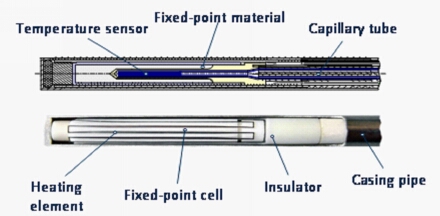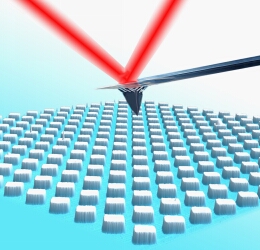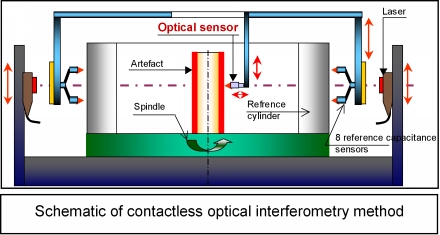T3D Work packages
Workpackage 1
The first workpackage will develop and optimise measurement equipment for dimensional stability. Improved dimensional stability, structural connections and sensing instrumentation will be developed to improve contactless optical interferometry and indentation test methods. The two contactless optical methods are:
- An absolute length measurement technique which uses well-established traceable interferometers that can achieve sub-nm uncertainty, and can build long-term (years) artefact histories.
- A fully contactless (double-sided) method that can achieve picometre uncertainties, but is only proven for short-term periods (minutes).
While these optical methods determine the bulk dimensional stability of the samples, indentation measurements will provide improved mechanical measurements.
Workpackage 2
The aim of this work package is to study the stability and thermal expansion of materials, structures, sensors, and joints on the nanometre scale with uncertainties down to picometres.
Samples provided by our collaborators will be measured using VSL’s picodrift interferometer, PTB’s Precision Interferometer and NPL’s Nanoindentation facilities to determine:
- dimensional stability over time (VSL, PTB)
- thermal dilatation (PTB) and
- temperature dependent hardness and creep (NPL)
The high-precision results will be used to optimise the instruments developed in WP1 and WP4.

Nanoindentation instrument
Workpackage 3
This workpackage will develop accurate, traceable and reliable temperature measurement systems for use in high precision instrumentation.
Reducing the uncertainty in temperature measurements to a few milli-Kelvins is required for characterisation and minimisation of thermal effects for high precision measurement and production.
The developed temperature sensors will be stable over a time frame of years, without maintaining or demounting the sensors for calibration, i.e. they are self-calibrating.

Maintenance free temperature measurement
Workpackage 4
Workpackage 4 will aim to optimise the design of precision engineering equipment by using modelling to design thermally insensitive instrumentation and active cooling systems to mitigate the effect of local heating sources. The key technology for a thermally insensitive design and active temperature control is thermal modelling. The REG-Researcher and the unfunded JRP-Partner ENSMA bring this expertise to the JRP. An active thermal control will be exemplarily demonstrated on the PTB measuring microscope, which is used for line detection of a length comparator at PTB. To demonstrate the effectiveness and applicability of both, improved thermal design ans active cooling techniques on a complete precision engineering machine the LNE prototype form measurement machine will be used as an example. Active temperature control will have the potential to improve the thermal sensitivity of the LNE prototype form measurement machine by a factor of ten. From this work general rules for improved machine design will be developed

AFM Cantilever
